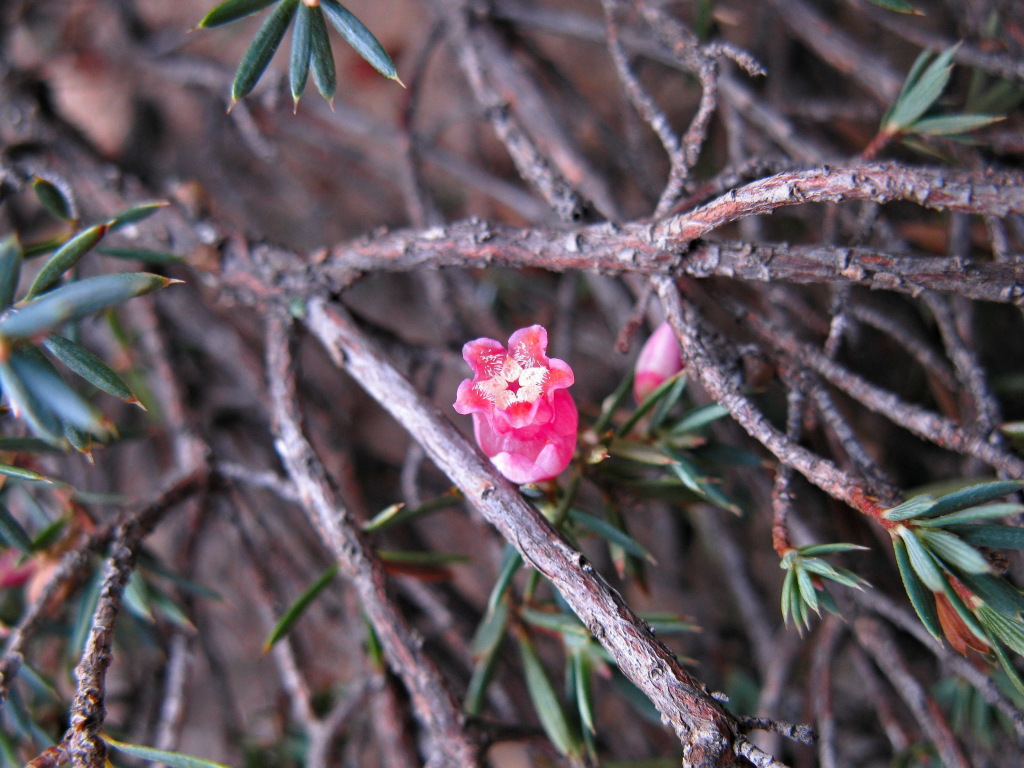Brachyloma ericoides subsp. ericoides
Brush HeathErect or spreading shrub c. 20–60 cm high; branchlets short-pubescent. Leaves dense, ascending, linear to narrowly elliptic, 4–13 mm long, 0.7–1.5 mm wide, mucronate, glabrous or almost so, flat to slightly convex, lower surface paler; margins plane to slightly recurved, serrulate. Flowers solitary (rarely paired); bracts and bracteoles broadly ovate to orbicular; bracts c. 6–17; bracteoles 1.3–3 mm long; sepals ovate-elliptic, 2.8–4.3 mm long, obtuse; corolla pink, rarely white, tube urceolate to bulbous, 3.5–5 mm long, constricted at apex, with 5 pubescent scales inserted below anthers; lobes not or slightly spreading, 2–2.7 mm long, obtuse to subacute, inner surface with spreading hairs towards centre; anthers cohering (sometimes only briefly); ovary 5(–6)-locular, style glabrous. Fruit globose, 3.5–5 mm long. Flowers Apr.–Nov.
LoM, MuM, Wim, OtP, Gold, CVU, GGr, DunT. Also SA.
The Kangaroo Island endemic Brachyloma ericoides subsp. bicolor R. Bates, differs in the pale green corolla tube, bracteoles and sepals, and the bright orange-yellow corolla lobes. Plants from Western Australia are included in a third subspecies, B. ericoides subsp. occidentale.
Albrecht, D.E. (1996). Epacridaceae. In: Walsh, N.G.; Entwisle, T.J., Flora of Victoria Vol. 3, Dicotyledons Winteraceae to Myrtaceae, pp. 464–509. Inkata Press, Melbourne.
 Spinning
Spinning
